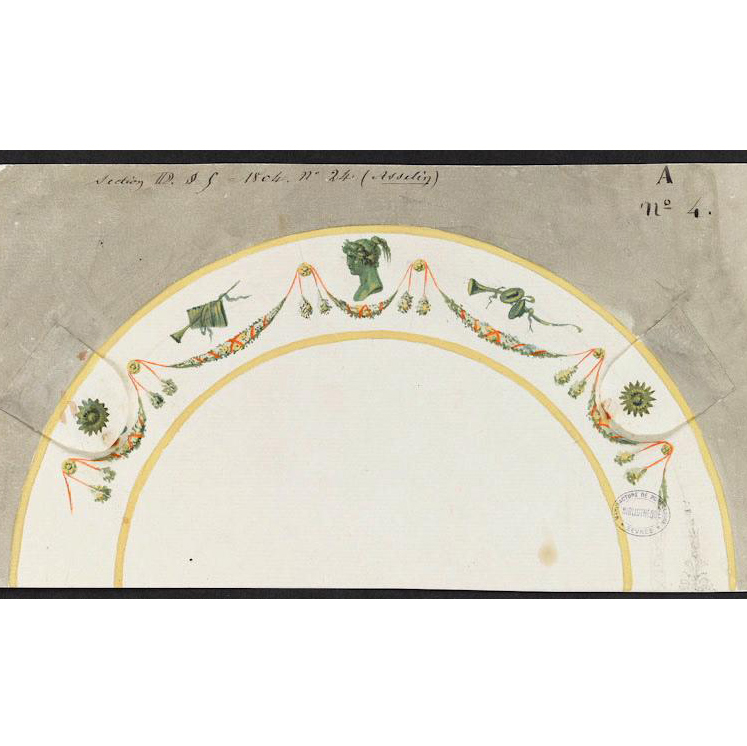With a central decoration of a double torch in brown on a pink ground, the marli is decorated with garlands of polychrome flowers encircling neo-classical attributes (urns, quiver, musical instruments) in brown on a white background, bordered with gold nets.
Wear on the pink ground and at the central attribute, one chip.
Sèvres national factory, Consulate period, year XII (1803-1804).
Mark with red stamp.
D. 23.5 cm.
Service sent to Stupinis for use of Emperor Napoleon I.
It is described: "pink background, garlands of flowers and attributes", and was delivered "To His Majesty the Emperor / For the Imperial Palace of Stupinis" on 8 rain of the year XIII (January 28, 1805), accompanied by a series of "various pieces". This table service contained 150 pieces including 96 flat plates with a unit cost of 30 francs (Arch. Cité de la Céramique, Sèvres, Vy16, f ° 19 and Vbb2, f ° 8).
The Stupinis hunting lodge (Palazzina di caccia di Stupinigi), wanted by King Victor-Amedee II of Savoy (1666-1732) is one of the two Baroque masterpieces of the architect Filippo Juvarra (1729-1733) , which is part of all the royal residences of the Savoy house in Piedmont, near Turin, and now houses the Museum of Art and Furniture.
Napoleon I made it an imperial residence and stayed there from 5 to 16 May 1805, using our table service daily, before going to Milan to wear the Iron Crown. During this period, it was also the seat of the 16th cohort of the Legion of Honor.
It also housed Pauline Bonaparte and her husband, Prince Camille Borghèse during his reign in Italy.
This service is cited by Tamara Préaud in : "Versailles and royal tables in Europe. XVIIth-XIXth centuries", Versailles, RMN, Paris, 1993, p. 222, note 1.










